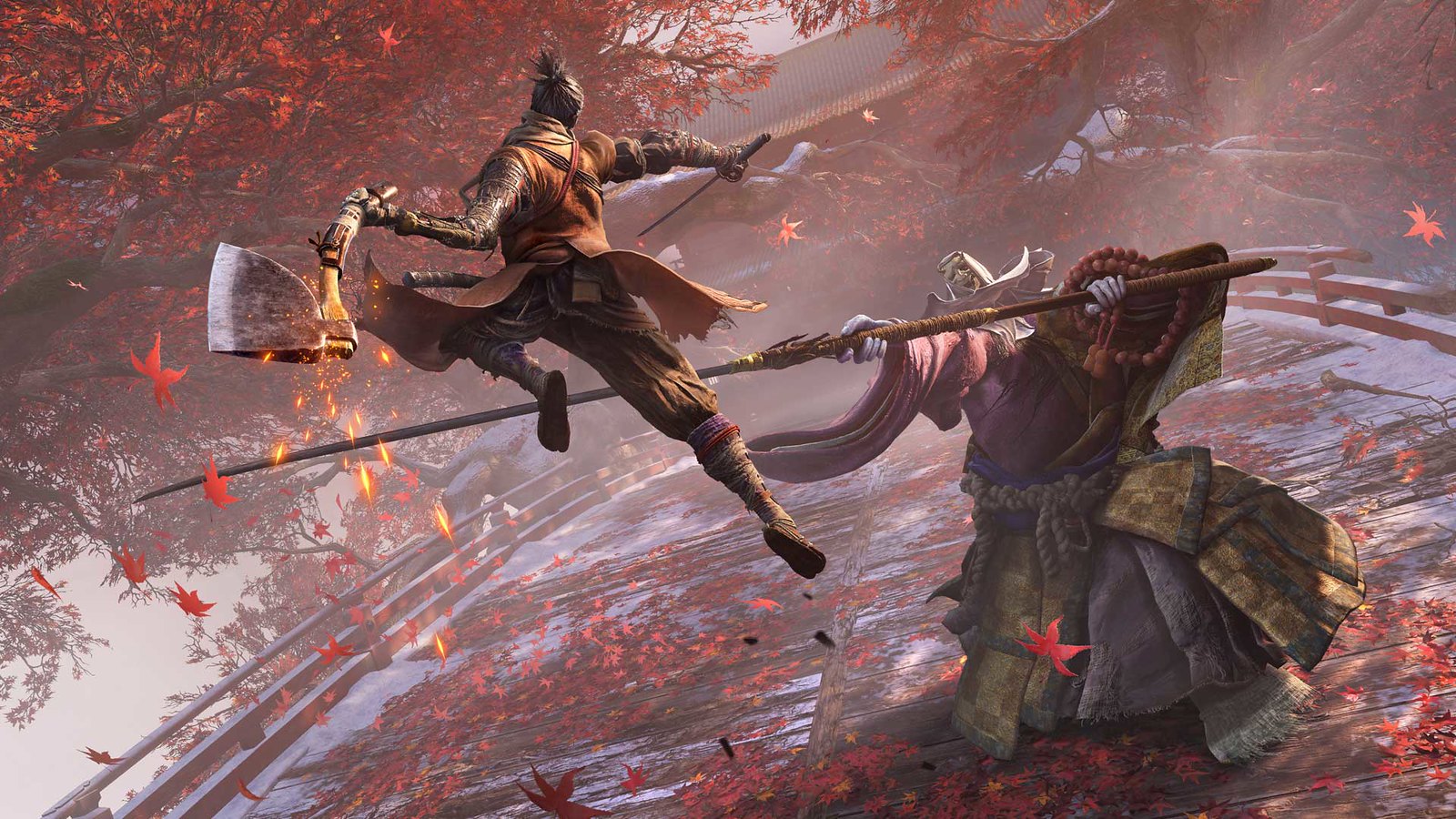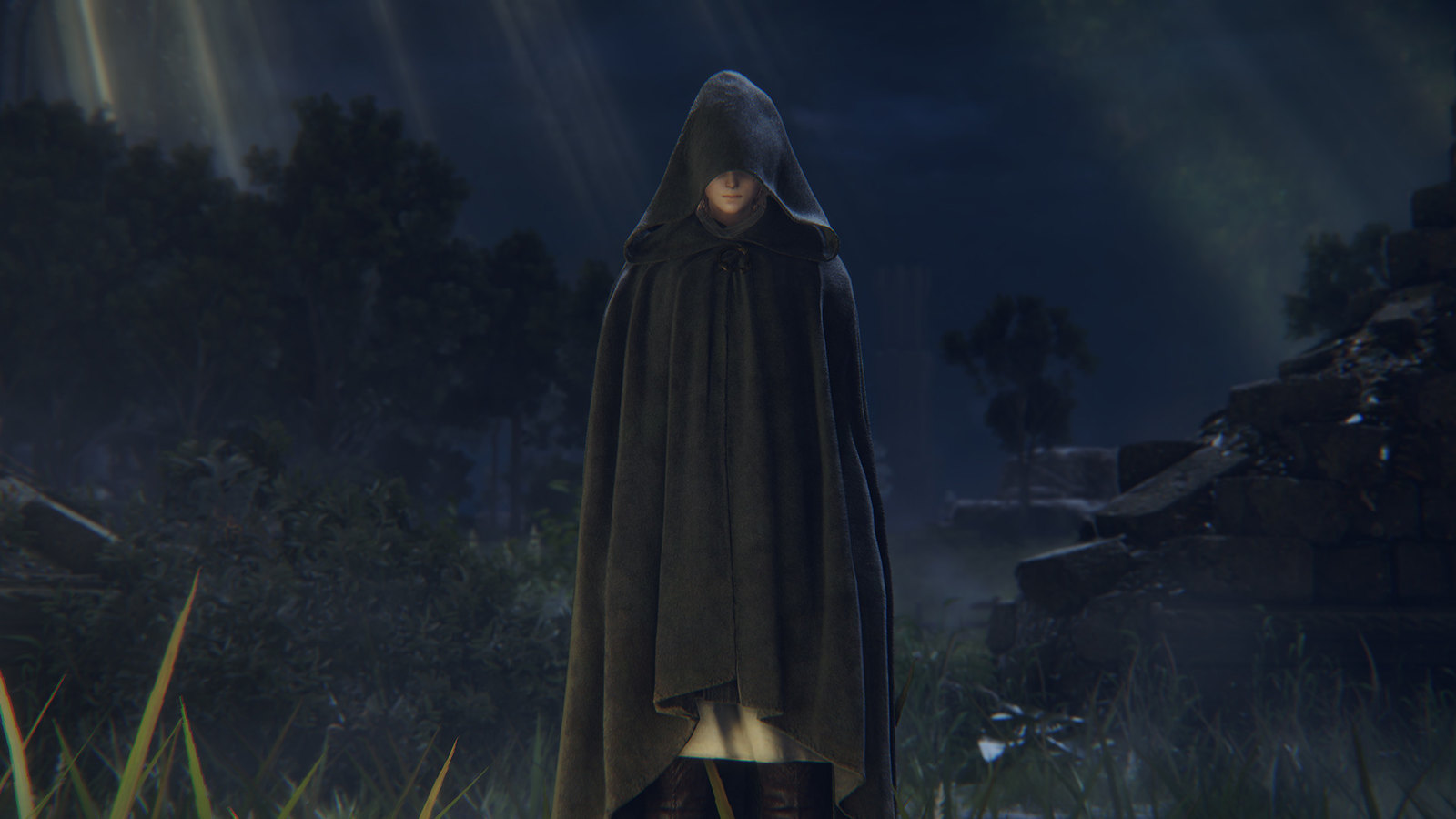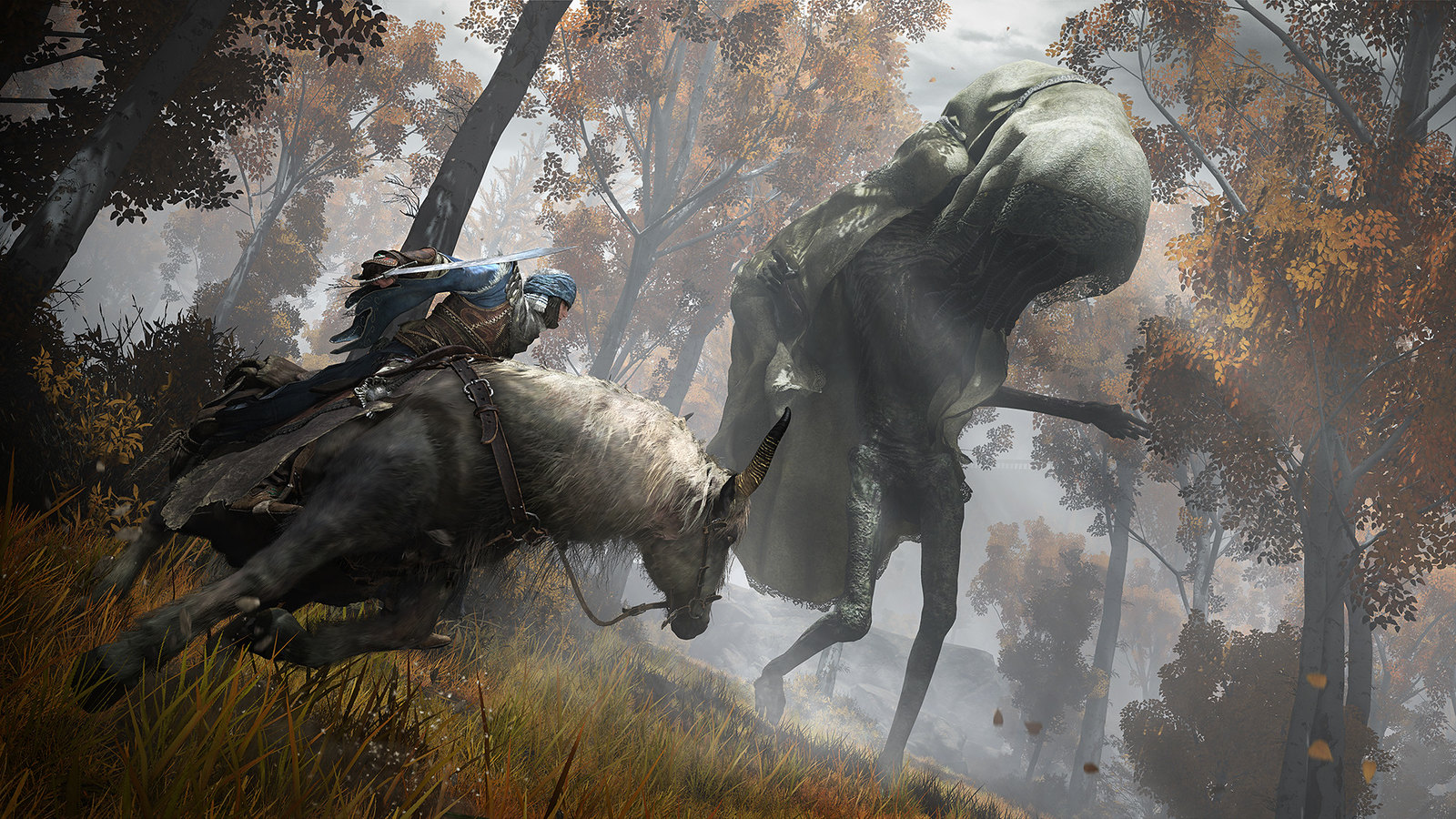About 13 years ago, Demon’s Souls launched on PlayStation 3, intriguing, challenging, and captivating players. Directed by FromSoftware’s Hidetaka Miyazaki, the action-RPG specialized in deliberate combat, unpredictable environments, and mysterious storytelling. FromSoftware has continued to evolve its formula, from Dark Souls to Sekiro: Shadow Die Twice, inspiring throngs of fellow game makers in the process.
Hidetaka Miyazaki and FromSoftware’s latest creation, Elden Ring, innovates on the core Souls formula in exciting ways. The forlorn open world of the Lands Between invites players to explore in any direction. A summonable mount allows for faster, more vertical traversal. Famed author George R.R. Martin has even partnered with FromSoftware to dream up the fantasy world players will delve into. It hits PS4 and PS5 February 25.
Lucky for us, Miyazaki-san took some time away from Elden Ring’s final stretch to chat about the game itself, his thoughts on accessibility and artistic collaboration, and even a bit about his time with the co-op fun of It Takes Two.
Gameplay footage in this article captured from Elden Ring Closed Network Test on PS5
PlayStation Blog: Congratulations on the warm reception to Elden Ring’s Closed Network Test! What reaction from fans and press stood out to the team most following this extensive hands-on test?
Hidetaka Miyazaki: Thank you! Overall, we saw some relatively good reactions from the network test, which was nice. I don’t tend to look at the raw user reactions; that can be a little scary. I typically get filtered feedback that comes down through various sources on the team, both on our side and the publisher side, so I get to look from a more holistic view.
As to what was particularly valuable, we mostly found things that we tend to take for granted as game developers and might consider obvious. Stuff that the users found difficult to figure out or didn’t gel with them immediately were helpful pieces of feedback. For instance, regarding the new summon pool mechanic, users can place their signs and have them collected into a group of available players to summon. Things like this weren’t immediately apparent to players, so this sort of feedback was beneficial in fine-tuning these features.
What’s one element about Elden Ring that you want to ensure isn’t overlooked by fans/press before the game launches?
There’s not one specific area from the network test that players overlooked or a part of the game that we want to push on them. Mainly, we want players to feel the importance of the level of freedom that we’re focusing on this time. We want them to enjoy the game in their own way and feel liberated in this new open world that they can explore at their own pace.
If possible, we want players to try and steer clear of spoilers or guides and go in with a completely fresh, open mind and enjoy that initial sense of adventure. That’s how we’d want to experience the game if we were going into it for the first time. And that’s how we hope our players can experience the game comfortably at their own pace with this new sense of wonder.
A look at the open-world of the Lands Between
What were your biggest lessons learned in making a sprawling open world game?
There were two major challenges we faced developing Elden Ring. The first was expanding upon the level of freedom. More so than our previous games, Elden Ring has a vast world with an open overworld, so we were faced with the ordeal of how we maintain our gameplay style while offering a renewed sense of openness. So with elements like balancing the player’s exploration alongside boss fights, the order of progression that players go through the game, and the progression of the events themselves throughout the map–trying to expand on player freedom while balancing all of this was a significant challenge. But we learned many great lessons attempting to achieve this.
Another challenge making an open world game is the tempo and pacing of the player’s progression, essentially trying to balance how the player paces themselves as they explore this vast open-ended map and how that factors into the scope of freedom and progression they provide. So we also learned some valuable lessons while making adjustments in that regard.
Sekiro: Shadows Die Twice by FromSoftware and Activision
In what ways have Sekiro: Shadows Die Twice impacted your philosophy on developing Elden Ring?
I’d have to say that, considering Sekiro’s development overlapped with Elden Ring’s to an extent, there’s nothing that directly came through from that project. But there were several indirect examples there. For instance, the enemy stance break mechanic in Elden Ring is similar to Sekiro’s successful posture system. We even referenced Sekiro’s player traversal for the horse mounting system and how you traverse the map in Elden Ring.
Also, in terms of the narrative and how we tell character stories, Sekiro was a lot more direct than our previous Souls-like titles. While we’re still maintaining Elden Ring’s world with a sense of depth and a fragmented narrative–we’re still upholding our storytelling philosophy–there’s more focus on human elements and drama than before. We definitely took some inspiration from how Sekiro handled that and tried to apply the good parts to Elden Ring.
Is there any advice you have for newcomers coming into Elden Ring, whether that’s a suggested class or playstyle?
In general, I’d like new players to feel unpressured and that they can approach the game at their pace. I don’t want to enforce any playstyle or particular route because I’d like them to experience that sense of freedom. And I realize that while we offer games with a high level of challenge, we design them in a way that feels fulfilling to overcome. But I don’t want new players to worry or stress about that difficulty too much.
This time in Elden Ring, we have many options at the player’s disposal to confront challenging situations and use their cunning to outsmart enemies and bosses. They can come back to something later when they’re at an impasse so that they can have this freedom of progression and not have to bang their head against a wall over and over. They can figure out what to do and how to approach it again, at their own pace.
Like our previous games, we have multiplayer elements, but the barriers to entry have lowered to make it a lot more accessible. So we hope players take full advantage of that.
As for a starting class, it’s entirely up to the player. It’s an RPG, and they can approach it however they like and choose whichever looks the coolest to them. But I would recommend against choosing the naked one (known as the Wretch). As before, it’s probably the most difficult starting class!
How has the ongoing discourse around game difficulty and accessibility impacted the way you’ve tailored and maintained FromSoftware’s trademark difficulty in Elden Ring? Was this something your team has been trying to be more mindful of?
Yes, we have. It’s a valid discussion. I feel like our approach to these games, not just Elden Ring, is to design them to encourage the player to overcome adversity. We don’t try to force difficulty or make things hard for the sake of it. We want players to use their cunning, study the game, memorize what’s happening, and learn from their mistakes. We don’t want players to feel like the game is unfairly punishing, but rather that there’s a chance to win a difficult encounter and make progress. We understand that Souls-like games are regularly associated with impossible levels of difficulty with high barriers to entry. But we try to design the games to make the cycle of repeatedly trying to overcome these challenges enjoyable in itself. So we hope that with Elden Ring and the new options it provides, it will be a success in that respect.
In Elden Ring, we have not intentionally tried to lower the game’s difficulty, but I think more players will finish it this time. As I mentioned, the player’s level of freedom to progress through the world or return to a challenge later are all elements that I feel will help people get through the game at a more leisurely pace. Also, there isn’t a focus on pure action. The player has more agency to dictate their approach against, for example, the field bosses in the overworld and how they utilize stealth in various situations. We’ve even reduced the number of hoops that you have to jump through to enjoy it in multiplayer. So we hope the players embrace that idea of receiving help from others. And we feel like the overall clear rate will go up this time because of these things.
Elden Ring seems more lush, bright, inviting, and adventurous than anything I’ve played by From Software. Is this intentional, and does the game ultimately descend into much darker territory overall?
Yes, this was intentional, though not necessarily to make the game brighter. But giving it a splash of color was necessary this time, particularly considering Elden Ring has a vast open world to explore. We wanted to give a sense that a Golden Age has passed through this world and that the player can still see traces of it. We wanted to provide the world with a much more painterly look to invoke a high fantasy feeling as a theme.
Also, in such a large open world, to have it be dark all the time would be too oppressive. So we’re trying to use the broadness of the lands in-between to show the appeal of both sides. You can have these brighter, more colorful moments, but you can also have darker, more intense situations from previous FromSoftware titles, so we hope that players will look forward to that dark side as well.
Can players expect fan-favorite FromSoftware features like New Game Plus and multiple endings in Elden Ring?
Yes, both New Game Plus and multiple endings will be intact in Elden Ring.
In previous interviews, you’ve said you aim to balance beauty and grotesqueness in boss design. Can you explain how you tackle this using one of the revealed bosses of Elden Ring?
What you’re referring to in that balance between otherworldliness and a sense of beauty is most associated with Dark Souls’ boss characters. In Elden Ring, we wanted to take a slightly different approach because we had these brand new characters that George R.R. Martin wrote alongside the setting and mythos he provided for the world. He created these very heroic and grandiose designs, essentially these demigods from the history of Elden Ring’s world. So we wanted to take what he provided us and create a new core for these characters and how we design them.
From the boss designs that we’ve revealed so far, the one that I feel is a good match for how we take a heroic concept and twist and misshape it due to the power of the Elden Ring shards is Godrick the Grafted. He is an excellent example of this because he encompasses that feeling of sadness and frustration when a Lord comes to the end of his reign, trying to cling desperately to the power he still has left. In this way, Godrick is a great embodiment of that new design approach.
Let’s change gears a bit. Do you get much time to play games these days, and are there any new releases that grabbed your attention from the past few years?
I haven’t had a lot of time to play video games lately, but I try to dedicate some time when I can. One game that stuck with me recently was It Takes Two. I managed to play that one from start to finish with a friend online in three days across three sittings, and it was a great time. That game really left an impression on me, so yes, that’s one that I’ve managed to finish, at least!
Video games aside, I’ve always loved more analog games like tabletop and things like that. And one I do enjoy is a game called murder mystery. Not so much these days, unfortunately. It’s challenging to organize remotely and get people together, but yes, these more analog games are ones I greatly enjoy.
It Takes Two from EA and Hazelight Studios
What stood out about It Takes Two that made it unique or memorable for you?
It didn’t let up throughout, and it never let me get bored. The art and gameplay are different in each stage, and the game encourages you to cooperate across its entirety yet still maintains that artistic element. It’s continually fun to play and felt extremely fresh to me right up until the end, which was impressive to me as a fellow creator. Honestly, I didn’t have that much interest in it at first. But when I gave it a go with my friend, it finally clicked. And with a small child of my own, the narrative resonated with me, which was most interesting in the end.
FromSoftware collaborated with legendary fantasy author George R.R. Martin to craft the world of Elden Ring.
If you could collaborate with another influential creator (writer/game developer/movie director, etc.) on a FromSoftware game, who would it be?
That’s a difficult question. Even with the George R.R. Martin collaboration, this is something I didn’t even imagine would be possible. And yet, here we are. It’s not something I’ve given a great deal of thought to generally, to be honest. But let me see if I can think of something…
*Pauses*
I don’t think I would choose a fellow game creator. Honestly, one of the major appeals of working with George R.R. Martin was how the medium he works in is such a different style. Games and books are vastly different forms of media, after all. So if I were to choose, it would be someone who can provide that same level of stimulation that’s impossible for us to achieve as game developers. It could be someone who works in books, art, music, or anything that gives that impetus and can drive us as fellow creators but in an entirely different genre. I think that would have to be it–it’s very challenging to pinpoint a specific person or studio!
Is there anything else you wanted to mention for the players? Any other closing thoughts?
I want to give a huge thank you to everyone who’s following Elden Ring and watching us so closely. We appreciate all the support we’ve received throughout its development and campaign. We design these games to be challenging yet fulfilling, which will be very much intact in Elden Ring. But, as we touched on earlier, we want players to concentrate on the sense of adventure the game provides. We hope players discover the simple joy of exploration when playing and that they can approach it in their own way at their own pace. That’s what I hope!
Website: LINK













